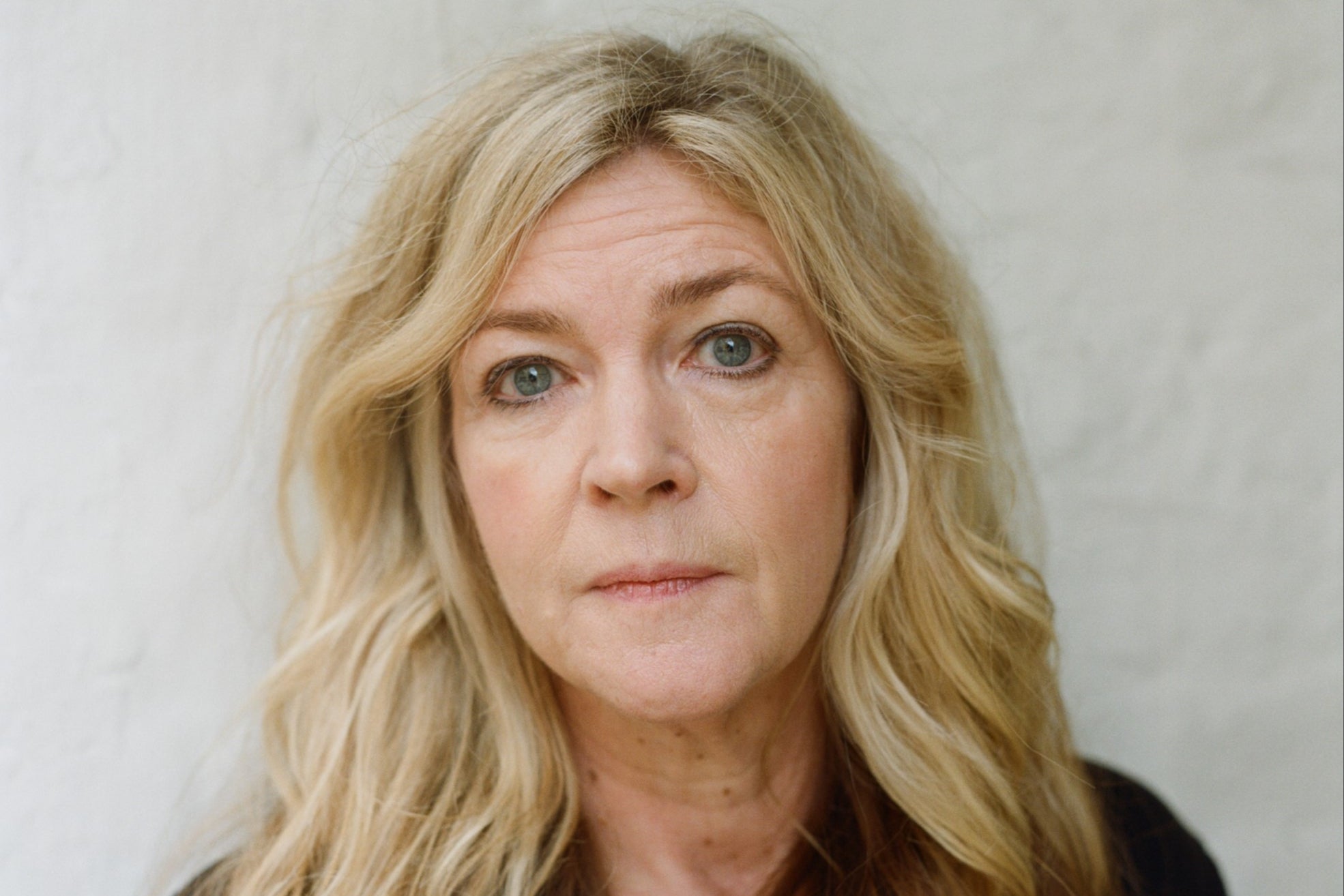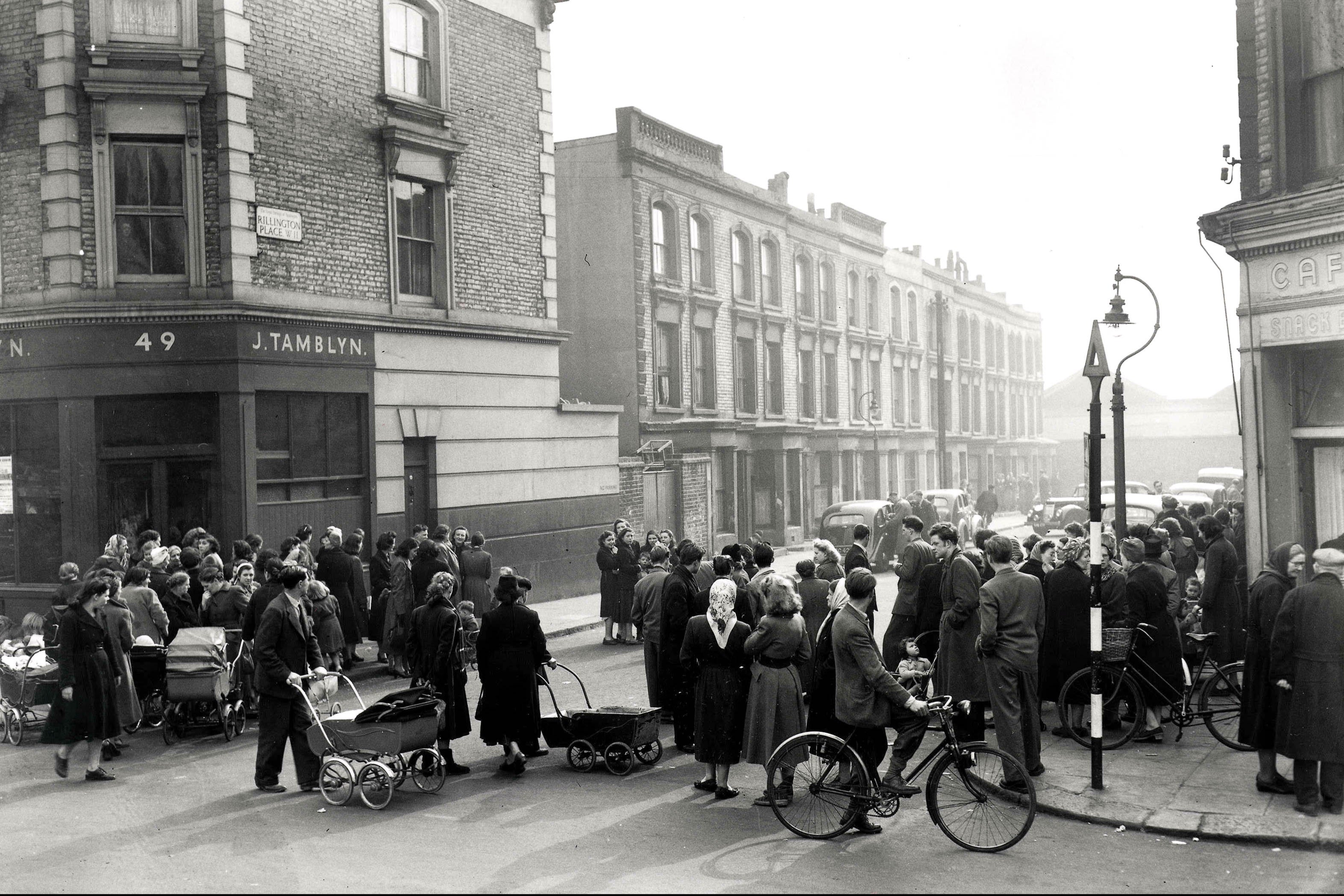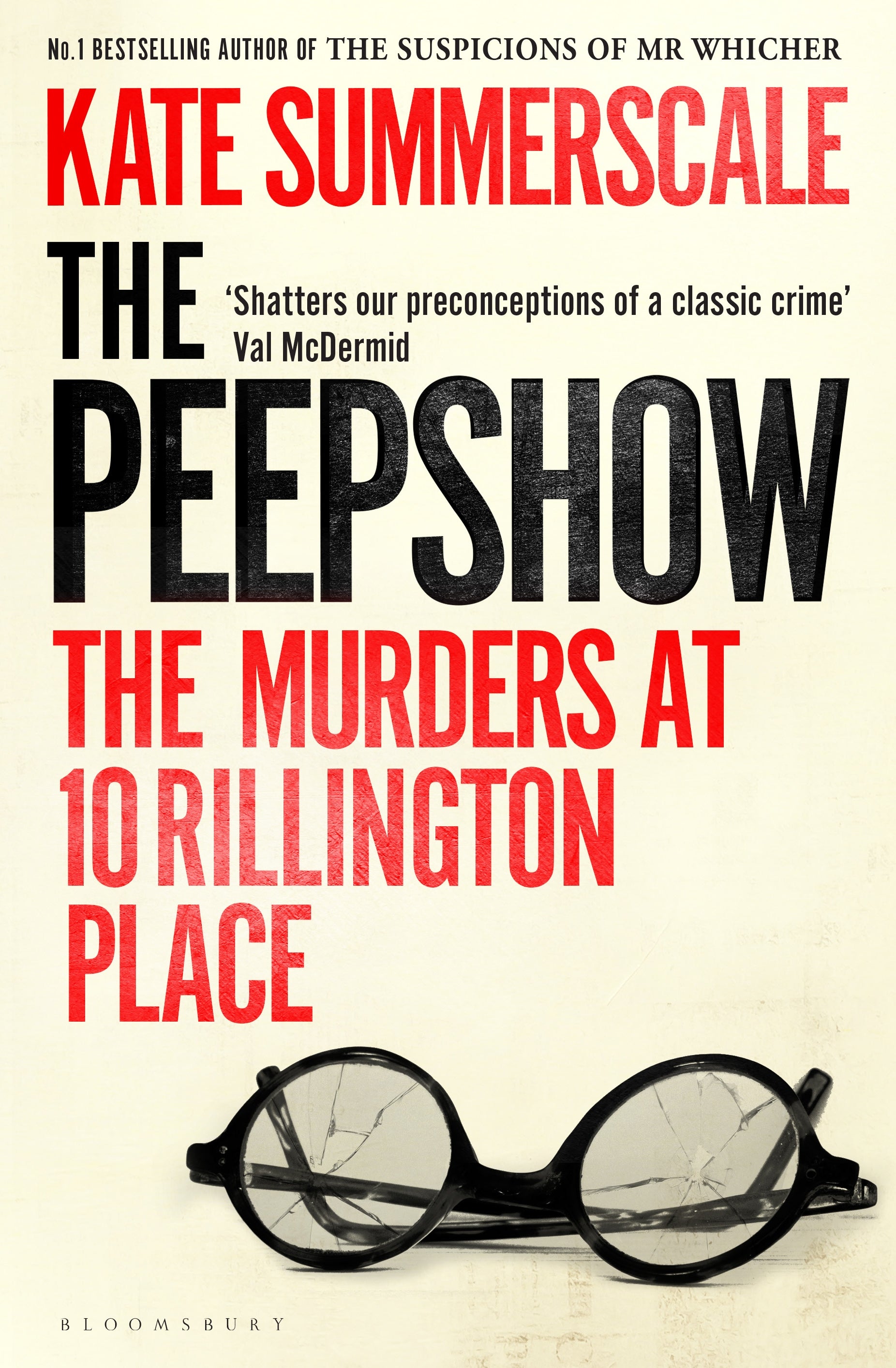When bestselling true crime author Kate Summerscale discovered herself trying again on the infamous murders at 10 Rillington Place, she was struck by a query: “Why do some males exit of their solution to kill ladies?” These horrific killings have already been the topic of numerous books, in addition to a basic movie and a BBC TV sequence. Nevertheless, when Summerscale started her analysis in 2021, a spate of latest crimes towards ladies – Bibaa Henry and Nicole Smallman, who a stranger in Fryent Nation Park killed, and Sarah Everard, who was kidnapped and killed by serving Met Police officer Wayne Couzens – meant that the case felt horribly resonant. Engaged on her e book The Peepshow, she would unpick these uncomfortable parallels and inadvertently find yourself discovering a solution to one of many case’s excellent questions.
Virtually 70 years earlier in March 1953, a tenant from the upstairs flat at this now infamous London handle made a horrifying discovery. Whereas cleansing the bottom flooring kitchen, he had torn a gap within the wallpaper; by way of it, he might see what seemed to be a lady’s bare again. When the police arrived on the unassuming end-terrace home in Notting Hill, they found the our bodies of three younger ladies, hidden in an alcove. Their names have been Rita Nelson, Kathleen Maloney and Hectorina MacLennan.
However the home, it turned out, held but extra surprising secrets and techniques. Beneath the floorboards was the physique of Ethel Christie, who had lived within the flat for 15 years together with her husband John Christie, referred to as Reg, a clerk and former police officer who had disappeared a couple of days earlier. Later, two extra our bodies have been discovered buried within the backyard: they have been Ruth Fuerst and Muriel Eady, who Christie had killed throughout the Second World Battle. In one other eerie twist, Rillington Place had already been the location of a homicide 4 years earlier, when upstairs tenant Beryl Evans and her child daughter Geraldine have been killed in 1949. Her husband Timothy had been discovered responsible of Geraldine’s homicide and sentenced to demise; he had initially confessed to the killings, however then modified his story, blaming Christie. Had the flawed man been hanged?
Again within the Seventies, Rillington Place was demolished as a part of the redevelopment of Notting Hill (earlier than that, it was christened Runton Shut in a bid to whitewash its disturbing historical past). Nevertheless, the handle stays an emblem of the horror that may lurk behind a good facade. It is a through-line within the tales that fascinate Summerscale, from the rich Victorian household torn aside by a homicide investigation in her 2008 hit The Suspicions of Mr Whicher to suburban poltergeists in The Haunting of Alma Fielding.
Christie’s crimes are “by far essentially the most well-known and written about” topic that the creator has ever tackled, she tells me, “so it was daunting, nevertheless it was additionally thrilling to tackle one thing that had such a significant cultural influence then and even now”. Christie, she notes, was “essentially the most infamous serial killer of girls of his time” – trying again on the Rillington Place case, she thought, can be “a means of not directly exploring our personal time in addition to serious about why he’d performed it”, uncovering “his personal psychology, but in addition the society by which he was formed”. Earlier than she began her analysis, she didn’t realise that Christie had been a policeman when he dedicated his first homicide in 1943, and that “his uniform gave him a plausibility and an authority that enabled him to get ladies into his clutches”. The parallel with Couzens was “chilling”.
In March 1953, Christie instantly grew to become the prime suspect within the killings. After the police described him to the press, warning that “no girl is secure from outrage and demise whereas he’s at massive”, they have been inundated with phantom sightings. On-edge Londoners gave the impression to be consistently recognizing Christie lookalikes – small bespectacled males carrying raincoats – on the Tube, in cafés or cinemas. A couple of week after the our bodies had been found, the actual Christie was apprehended by police close to Putney Bridge; when he was arrested, he was carrying a newspaper clipping about Timothy Evans’ sentencing from years earlier. He ultimately confessed to all the Rillington Place killings, besides the homicide of child Geraldine, and pleaded madness. The trial would hinge upon whether or not he can be incarcerated in a psychiatric hospital, or sentenced to demise if the jury rejected his plea.

In The Peepshow, Summerscale describes Christie as “a grotesque cartoon of the old style Englishman”, with a veneer of stereotypical respectability. He had skilled impotence from a younger age and will solely have intercourse with intercourse employees; this perceived humiliation appeared to gas his hatred of girls. He was, Summerscale says, “an especially sanctimonious man who was [outwardly] disgusted by prostitutes and pubs and cursing, but he was completely savage in what he did to ladies”. He would invite victims again to his flat, then knock them out with cooking fuel, earlier than raping and strangling them.
There was a creepy parallel between the voyeurism that Christie himself had carried out and the way in which that papers ran photos of the victims
Kate Summerscale
The contradictions between his outer facade and wicked secret life have been a warped echo of the uneasy dichotomies of the post-war period, Summerscale provides. The interval after the Second World Battle, she says, “was a time of nice sexual freedom, earlier than the Sixties, as a result of the struggle had actually loosened issues up – separating households, males paying for intercourse once they have been abroad, ladies possibly having dalliances at house”. However on the similar time, “there have been additionally a number of editorials condemning the free morals of British society”. Christie’s crimes have been rooted within the incongruity “between a society that had grow to be rather more free and one that also had this virtually Victorian perspective of condemning intercourse outdoors marriage”.
This era coincided with “Fleet Avenue in its heyday”, Summerscale says: “completely ruthless [and] type of a Wild West”. Newspapers often offered tens of millions of copies a day – and pursued more and more lurid tales to maintain their readers . No shock, then, that the tabloid press chased after each twist and switch within the Rillington Place saga. “There was a creepy parallel between the voyeurism that Christie himself had carried out and the way in which that papers ran photos of the victims alongside barely prurient descriptions of their our bodies, their seems, what they have been carrying once they died,” she provides.
At present’s true crime protection can nonetheless fall into related traps, objectifying feminine victims whereas purporting to centre their tales. Very similar to Hallie Rubenhold’s Baillie Gifford 2019 prize-winning e book The 5, which instructed the tales of the ladies murdered by Jack the Ripper, The Peepshow helps redress this salacious protection. Summerscale sifted by way of witness statements in police recordsdata from the ladies’s family and friends to “reconstruct how [the women] lived and who they have been” earlier than their deaths – it was “a painstaking job” but in addition “a really rewarding activity”.

Her e book additionally focuses on two very totally different writers who lined the case. The primary is Harry Procter, star reporter for the Sunday Pictorial, who had been one of many first to reach on the scene at Rillington Place after the our bodies have been found. Procter had beforehand interviewed Christie, shortly after the homicide of Beryl and Geraldine Evans in 1949. The likelihood that the journalist may need been duped by him – and that Timothy Evans may need been wrongly condemned to demise consequently – haunted him. “Following the case by way of [Procter’s] eyes helped me zoom in a bit and inform the story because it unfolded, somewhat than retrospectively,” Summerscale says. The Sunday Pictorial ended up paying for Christie’s authorized staff, in an ethically doubtful quid professional quo that gave Procter unique entry to confessional notes written by Christie in jail. After the decision, these have been printed, albeit in “closely tailored” type, within the Pictorial.
The second author is novelist Fryn Tennyson Jesse. Her essay about Christie appeared within the sequence of crime books Notable British Trials, “essentially the most prestigious true crime discussion board of the time”; it caught Summerscale’s consideration with its “acerbic tone”. She was additionally “most likely the one girl working within the true crime subject on the time”, having beforehand written books primarily based on real-life instances; most well-known was her 1939 novel, A Pin to See the Peepshow. In distinction to better-known thriller writers resembling Agatha Christie or Dorothy L Sayers, she was “much less within the ingenious plot” of a whodunnit “and extra [interested] at nighttime psychology” of a legal, Summerscale says, citing her as a precursor to The Proficient Mr Ripley creator Patricia Highsmith.
Jesse was hooked on morphine and, on the age of 60, was shedding her sight, however she nonetheless managed to attend court docket each day, having known as upon her excessive society connections to safe her place. She sat close to the likes of photographer Cecil Beaton and playwright Terence Rattigan – London’s cultural luminaries have been simply as hooked on the case as the common newspaper reader.
One way or the other these tales do relieve our nervousness, however additionally they arouse nervousness. It’s a wierd type of dance
Kate Summerscale
Certainly, our present obsession with grisly true crime podcasts and Netflix documentaries is in no way a brand new phenomenon. You possibly can hint our fixation again to instances like this one, the place homicide grew to become a supply of grim leisure as a lot as horror. It was “predominantly ladies” like Jesse who have been gripped by the Christie case, Summerscale says. Shortly after the invention of the our bodies, a bunch of “six middle-aged, well-heeled ladies” had pulled into Rillington Place in a Daimler to see the “homicide home”; a separate group of youthful ladies tried to “break in” to quantity 10. Some would queue up within the early hours for a seat within the public gallery throughout the trial.
This curiosity, Summerscale says, might sound “counterintuitive – why would ladies need to examine ladies being brutally murdered?” However she will suppose of some causes. “One is simply eager to know what you’re up towards – ladies may clearly be curious concerning the males who got down to assault them, as a means of defending your self or defending your self. However I believe there’s additionally darker impulses. One way or the other these tales do relieve our nervousness, however additionally they arouse nervousness. It’s a wierd type of dance.”
Finally, the jury rejected Christie’s plea of madness, after lower than an hour and a half of deliberation. He was hanged a couple of weeks later. However the controversy solely continued: absolutely it was an excessive amount of of a coincidence that two murderers had lived in the identical constructing, and strangled their victims? Had Timothy Evans been harmless all alongside? An inquiry was commissioned, however its chief, John Scott Henderson QC, ultimately concluded that Christie had lied about murdering Beryl Evans, with a purpose to slot in together with his narrative of madness, and that Evans was responsible. A second inquiry in 1966 concluded that Evans had killed his spouse however not his daughter, and he was granted a posthumous pardon. In 2004, the Prison Circumstances Evaluation Fee mentioned that “the conviction and execution of Timothy Evans for the homicide of his youngster was wrongful and a miscarriage of justice”, and in addition declared “there isn’t any proof to implicate [Evans] within the homicide of his spouse”.

However when she was deep in analysis on the Nationwide Archives, Summerscale uncovered a memo that prompt a distinct conclusion. It was a file of a dialog between Christie and a jail guard, shortly after he’d been condemned to demise. “It is a assertion that’s of no profit to him, not like any of the opposite statements,” Summerscale says. In it, Christie says that Evans had requested him to “do in” his spouse, with whom he’d had a fraught, generally violent relationship. Christie had then killed her and murdered her daughter, in case the sound of the infant’s cries provoked alarm.
“As I considered it and skim once more by way of all of the totally different, contradictory confessions that had been made, I assumed ‘that is the primary account of the murders of Beryl and Geraldine Evans that really may make sense, that may accommodate the totally different tales and clarify them,’” Summerscale says. The memo had been sealed up for many years afterwards. “In order that alerted me to the truth that the federal government had taken it severely, not essentially as an answer to the crime, however as one thing that might trigger an infinite stir.”
When Summerscale began writing The Peepshow, she says, she “went into this case considering ‘who’s a serial killer of girls? The place does he come from?” She actually “didn’t go into it considering ‘I’m going to unravel the Evans murders’”. This newest potential resolution, with its muddle of culpability, maybe solely complicates and compounds the murky horror of this case that has fascinated folks for many years.
‘The Peepshow: The Murders at 10 Rillington Place’ by Kate Summerscale is out now, printed by Bloomsbury



